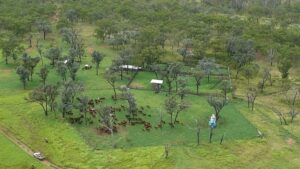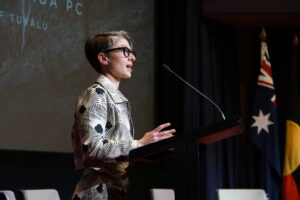Imagine if petrol prices went up from $1.29/litre to $180/litre for brief parts of the day on a few days of the year. Worse still, imagine drivers had no way of knowing what price they were paying until after they’d filled up.
[This article was first published by Crikey here]
If that was the case, Australia’s energy ministers meeting in Brisbane today at the COAG Energy Council would have ways to help drivers avoid the price spike at the top of the agenda. Thankfully, this doesn’t happen with petrol, but essentially this is what happens with electricity in Australia.
Evening out electricity price spikes and helping electricity users avoid them should be the main game at the energy talks today and Shane Rattenbury, the ACT Minister for Climate Change and Sustainability will give the other seven ministers a new report by The Australia Institute in which we profile how “aggregated demand response” could work in Australia.
Aggregated demand response is a system where thousands of homes, businesses and factories are linked together by a cloud-based computer system into what the CSIRO calls a “virtual” power plant. Rather than generating electricity when supply is short, a virtual power plant turns down energy-consuming devices, to restore balance to the grid and keep the lights on. Instead of building more infrastructure to deliver excess megawatts we can deliver “negawatts” of energy savings.
(In strict economic terms, demand response is designed to improve the allocative efficiency of energy markets. There are other efficiency measures — such as passive solar building design and appliance standards — which are designed to reduce the overall amount of energy consumed.)
After South Australia had a blackout last year, governments proposed to build new generators to improve security. Prime Minister Malcolm Turnbull commissioned a study into a multibillion-dollar upgrade to the Snowy Mountains hydroelectric scheme. The study and review process alone is likely to take years to complete.
According to the Australian Energy Market Operator’s CEO Audrey Zibelman the lights should stay on this summer, but AEMO also confirms that there is a risk of energy shortfalls in New South Wales, Victoria and South Australia.
The conventional solution to the risk of energy scarcity is to build new generators and increase the carrying capacity of the grid — the notorious “gold plating” that Energy Minister Josh Frydenberg rails against. The old energy industry is like the proverbial man with a hammer, to whom everything looks like a nail.
Dr Alan Pears AM has argued for many years that efficiency is the elegant solution that gives governments the easiest energy (and therefore climate) policy wins. In his submission to the Finkel Review he wrote, “Energy efficiency is core to energy and energy market policy: it drives the amount, timing and quality of the energy required”.
The negawatts answer to energy security is to make demand controllable, so it can respond to high prices and grid congestion. One of benefits of this approach is that it does not involve building large, centralised infrastructure. It simply repurposes existing assets, owned by private companies or households, ranging from massive factory smelters through to commercial cool-stores and even domestic air-conditioners.
How it works is that an aggregator company installs controllers onto the consumer devices and links these to its control software. Consider the example of a large commercial cool store full of food that has to be kept below 4 degrees. AEMO forecasts that there will be a heatwave tomorrow and an energy shortage for half an hour at 5pm and the aggregator kicks into action.
On the next day, at 4pm, while electricity is around the average of $100 per MWh, the aggregator software takes remote control of the cool store and pre-chills it down to 2 degrees. Then at 5pm, when the price of electricity rockets up to the regulatory limit of $14,000, the fridge is turned off. The insulation keeps everything cool enough until the price peak passes and the refrigeration compressors are turned back on.
The aggregator has saved an electricity bill increase of $14,000, at almost no cost. This profit is then split between the aggregator and the energy consumer. The grid benefits from lower congestion, lower wholesale peak prices and less chance of a blackout.
What makes this system so politically powerful is that it means households can also participate in lucrative energy markets. There are already 1.6 million households with solar PV and four in five of these are keen on installing batteries, according to polling by The Australia Institute.
Reposit, an Australian startup, is already paying its customers “GridCredits” for using their batteries to boost supply. This makes money for the household and has no impact on their comfort at home.
The International Energy Agency benchmark is that demand response can deliver around 15% of peak demand but we have less than 1% of demand response operating. The demand response sector is forecast to grow almost four-fold by 2025, to be worth US$36 billion and producing 144 GW negawatts of avoided energy waste.
COAG has been deliberating this issue for 15 years. In 2002, the Parer Review recommended opening up the electricity market so that energy efficiency negawatts could compete with more expensive — and polluting — generation megawatts.
One of the key market reforms that is required is to move to faster markets, as recommended by the International Energy Agency. The Australia Institute has made submissions to the Australian Energy Market Commission and the Climate Change Authority, in favour of the Five Minute Settlement Rule and reforms to enable demand response.
My view is that modernising energy markets, and opening them up to competition from new, clean energy and energy efficiency technologies is the way that Minister Frydenberg can have a big win in both the energy and environment sides of his portfolio.
In 2017, it is time to put energy efficiency reform at the top of the agenda. Australia’s energy ministers need to cut the kvetching and get with the program.
Between the Lines Newsletter
The biggest stories and the best analysis from the team at the Australia Institute, delivered to your inbox every fortnight.
You might also like
Corporate Profits Must Take Hit to Save Workers
Historically high corporate profits must take a hit if workers are to claw back real wage losses from the inflationary crisis, according to new research from the Australia Institute’s Centre for Future Work.
Here are 23 Times Carbon Offsets Were Found to be Dodgy
Carbon offsetting has received a lot of attention recently. As businesses and governments look to meet their climate targets, many are turning to carbon offsets. That is, they are paying someone else to reduce or avoid putting greenhouse gases into the atmosphere, so they don’t have to.
The Climate Crisis is an Integrity Crisis | Polly Hemming
I am starting my address to this year’s summit in the exact same way that I started last year’s address. Because it is just over a year since I delivered these same words, which aren’t actually my words. They are the words of our Climate Change Minister, and they provide a baseline of sorts for what progress has been made in that time.

